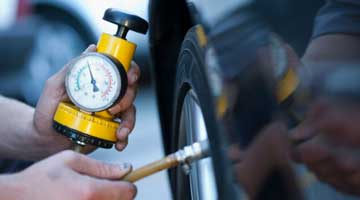The MOT test will change on 20 May 2018, and the new test will affect cars, motorbikes, vans and other light passenger vehicles.
However, recent research shows that 70% of us don’t quite understand the revised test. And with a new range of new checks and harsher rules on the way, it pays to get up to speed with the new test now.
AXA has outlined some of the main changes to keep an eye out for before your next MOT in 2018.
Different defects
First up, the new MOT test will feature three main categories of defect:
- Dangerous – an immediate risk to road safety and/or the environment. This is an automatic fail. Stop driving immediately.
- Major – it may affect road safety and/or the environment. This is an automatic fail. Repair immediately.
- Minor – no significant effect, but still needs repairing as soon as possible.
New MOT checks
There are a few new checks being introduced as part of the revised test.
New checks for all vehicles:
- Under-inflated tyres
- Contaminated brake fluid
- Fluid leaks that could harm the environment
- Brake pads: missing pads or discs; warning lights not working
- Small changes to existing checks (ask at your test centre)
New checks for vehicles first used from 1 September 2009:
- Reversing lights
- Headlight washers (if in place)
New checks for vehicles first used from 1 March 2018:
- Daytime running lights (although a 2018 car is unlikely to have an MOT before 2021)
Tougher tests for diesel vehicles
Some of the biggest changes to the MOT test will affect diesel vehicles in an attempt to cut down on vehicle emissions.
Some diesel vehicles are fitted with a diesel particulate filter or DPF (if you’re unsure whether your vehicle has a DPF, check in your car manual). A DPF reduces a diesel engine’s emissions by catching and storing the soot from the exhaust. The new MOT includes a test to check that the DPF is doing its job.
There are now two items here that count as major faults: smoke coming from the exhaust (this doesn’t have to be black: any colour is a fail); and if they find evidence that the DPF has been tampered with. If the DPF has been worked on for any reason, such as cleaning, you’ll have to provide evidence (for example, a receipt from the garage). The emissions will be tested to the value set by the manufacturer.
Good news for the over 40s
Cars, that is. Until now, only vehicles registered before 1960 were exempt from the MOT. When the changes come in, vehicles aged 40 and over won’t need to be tested, provided there haven’t been any major alterations (and here’s the definition of substantial changes).
If you own a vehicle that is over 40 years old, you don’t have to do anything: the cessation of your MOT happens automatically. However, each time you tax your vehicle (even if you don’t need to pay the tax), you’ll have to make a declaration that your vehicle is roadworthy. Driving an unsafe vehicle can result in a fine up to £2,500 and possibly three penalty points.
Failing an early MOT
Here’s a change to be aware of if you want to avoid a £2,500 fine. If you have your vehicle tested before its current MOT expires and the tester finds a dangerous or major fault, you can be fined for driving an unsafe vehicle even if your previous MOT is still in date. Carry out any repairs or take your vehicle off the road immediately.
A new-look certificate
The MOT certificate has also been updated to reflect the three new defect categories and should be clearer to read at-a-glance. The online MOT checking service will also be updated to reflect the changes. Welsh drivers can also apply for a Welsh-only certificate for the first time.
In the trade?
If you run a garage or workshop that offers tests, have a look at the government guidelines for MOT testers.












